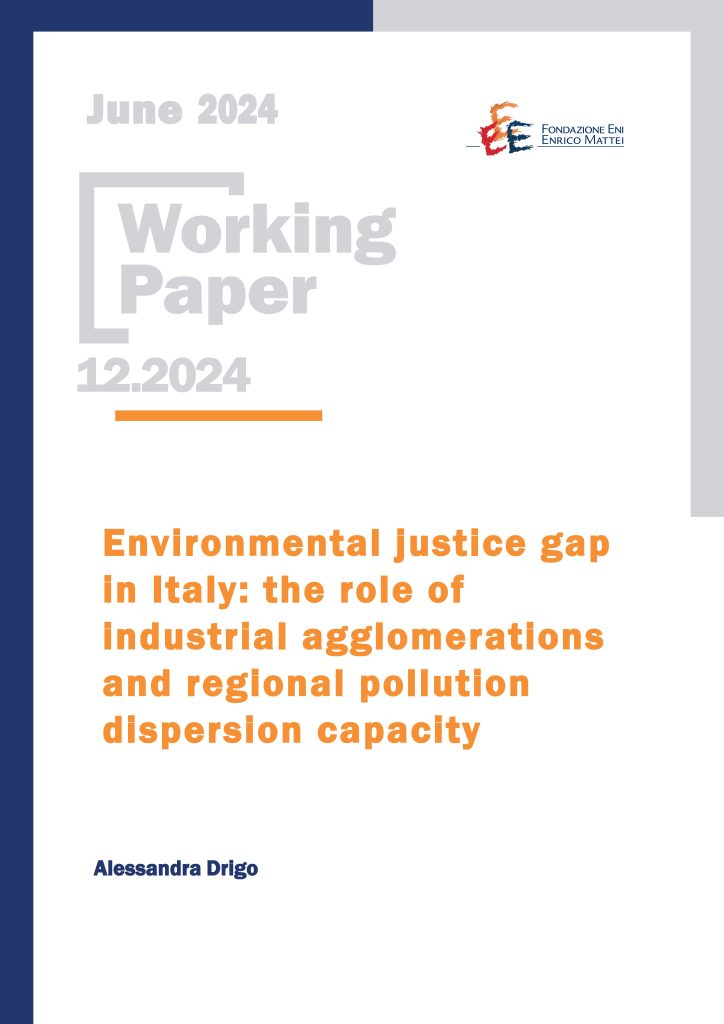Environmental justice gap in Italy: the role of industrial agglomerations and regional pollution dispersion capacity

20.06.2024
Alessandra Drigo (Department of Environmental Science and Policy, University of Milan and Fondazione Eni Enrico Mattei)
Q53, Q56, I14, C21
Environmental inequality, Environmental justice, Air pollution
This study is the first to examine the relationship between PM2.5 concentration and per capita income at the municipality level for Italy. The novelty of this work is also to explore the role of agglomerations and morphological factors in influencing the income-pollution correlation in the year 2013, and to assess its persistence to 2019. While there is not an unconditional environmental justice gap in Italy, controlling for land morphology and agglomerations variables weakens the positive correlation between PM2.5 and per capita income to the point of disappearance. Notably, being located in the Padana Valley ecoregion serves as a key indicator of environmental injustice nation-wide. The excess of PM2.5 exposure in the region increased mortality risk by 13.8% in 2013 and 10.88% in 2019 with respect to the WHO threshold (5 mg/m³ annual average). The largest environmental justice gap in relative measures shows a difference in mortality risk of 9.31% in 2013 and 7.04% in 2019 between the populations of the most polluted ecoregion (Padana Valley) and the least polluted one (Apennines). When attempting to disentangle the pollution variation among municipalities within the same province, the per capita income level of municipalities emerges as a significant indicator. An increase of 10,000 euros in the average per capita income of the municipality corresponds to a decrease of 2.01 mg/m³ in PM2.5 annual average exposure level (-1.6% in mortality risk) in 2013 and 1.05 mg/m³ (-0.7% in mortality risk) in 2019.
***
Suggested Citation: A. Drigo, ‘Environmental justice gap in Italy: the role of industrial agglomerations and regional pollution dispersion capacity’, Nota di Lavoro 12.2024, Milano, Italia: Fondazione Eni Enrico Mattei.
